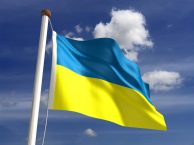
NATO Considers Expanding Nuclear Arsenal in Response to Global Threats
The North Atlantic Treaty Organization (NATO) is contemplating the deployment of additional nuclear weapons as a strategic response to escalating global threats. This consideration is driven by a series of geopolitical tensions and perceived aggressions from major world powers.
Rationale Behind the Nuclear Deployment Discussions
NATO Secretary General Jens Stoltenberg has suggested that showcasing the alliance’s nuclear capabilities could serve as a potent deterrent against potential adversaries. In light of these threats, consultations are underway regarding the removal of missiles from storage to be placed on high alert.
Key Factors Influencing NATO’s Nuclear Strategy
- Deterrence Strategy: Stoltenberg emphasizes the need for a visible nuclear arsenal to prevent hostile actions from nations such as Russia, China, and North Korea. He contends that the presence of NATO’s nuclear weapons serves as a critical counterbalance in maintaining global stability.
- Ongoing Consultations: Discussions among NATO member states are focused on the logistics and implications of readying nuclear missiles. This includes evaluating the strategic benefits and potential risks associated with such a move.
- Nonproliferation vs. Security: Despite NATO’s commitment to nonproliferation, Stoltenberg argues that a scenario where adversaries possess nuclear capabilities while NATO does not pose a greater risk. The alliance believes that maintaining a robust nuclear arsenal is essential for deterring aggression and ensuring collective security.
Reactions and Geopolitical Tensions
The proposal to bolster NATO’s nuclear posture has elicited strong reactions, particularly from Russia. Kremlin spokesman Dmitry Peskov condemned Stoltenberg’s comments, characterizing them as an escalation of nuclear rhetoric. President Vladimir Putin regards the discussion of nuclear armament with utmost seriousness, reflecting the high stakes involved in such deliberations.
Additionally, Russia’s joint nuclear drills with Belarus have further exacerbated the situation, highlighting the growing military tensions in the region.
Conclusion
As NATO navigates the complexities of modern global threats, the alliance’s consideration of expanding its nuclear arsenal underscores the delicate balance between deterrence and escalation. The outcome of these discussions will have significant implications for international security and the future of nuclear nonproliferation efforts.



